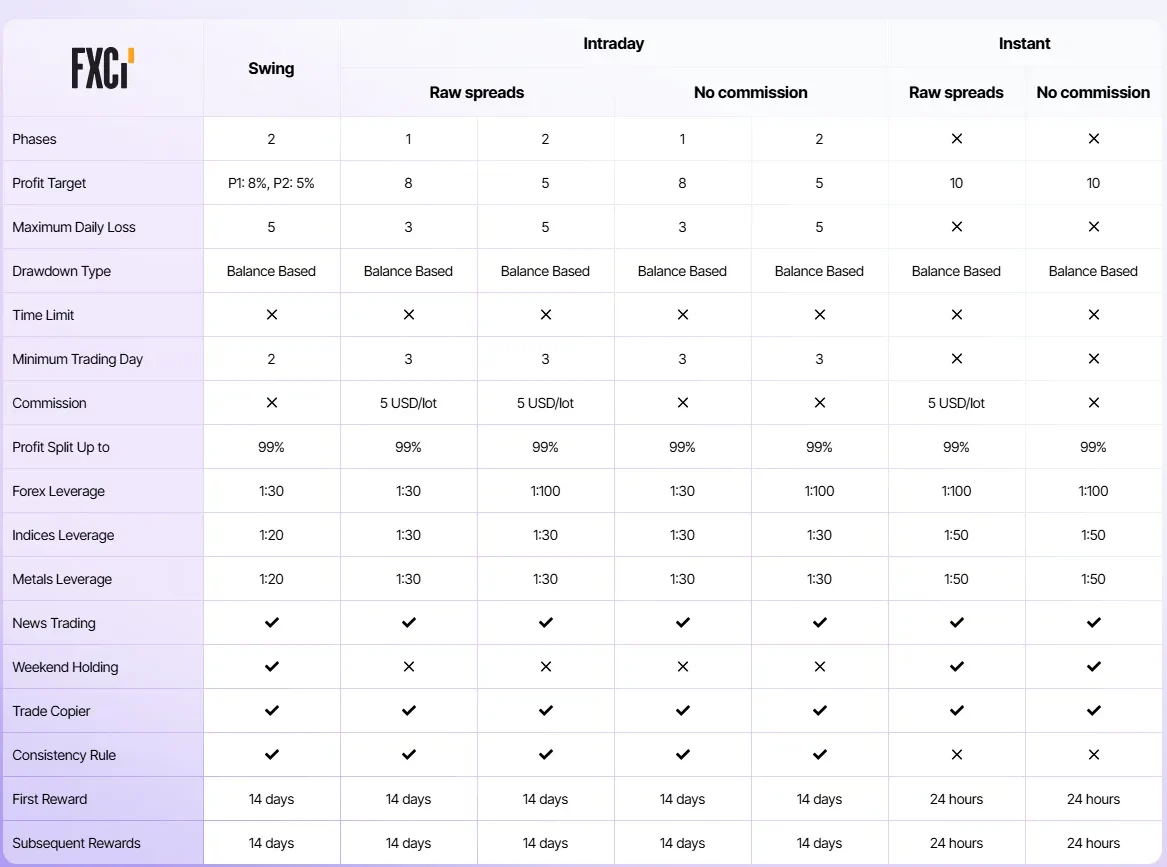Basics of trend-based strategies in prop trading
FXCI prop trading firm offers funded accounts up to $300,000 in India. Earn up to 99% profit trading with FXCI’s capital.
LIMITED TIME! 50% OFF Trading Challenges
Use code «FXCI50» before time runs out. Start with $300K capital & earn 99% profits. Register now below 👇
In the fast-paced world of prop trading, it’s crucial to understand how to make informed, strategic decisions based on market trends. One of the most effective approaches is using the basics of trend-based strategies in prop trading. These strategies focus on identifying and following the prevailing market trends to maximize profits while minimizing risks.
This article will explore the core concepts of trend-based trading strategies, practical examples, and how you can apply these techniques on the FXCI platform. Whether you're a novice or an experienced trader, this guide will help you better navigate market trends and make informed decisions.

What Are Trend-Based Strategies?
Trend-based strategies rely on the principle that markets often move in trends—upward, downward, or sideways. Identifying and following these trends is key to making profitable trades. Here’s a breakdown of Basics of trend-based strategies in prop trading:
| Step | Description |
|---|---|
| Trend Identification | Recognizing whether the market is in an uptrend, downtrend, or consolidating. |
| Trade Execution | Enter trades when the price confirms the trend direction. |
| Risk Management | Using stop losses and position sizing to control potential losses. |
| Exit Strategy | Exiting when signs of trend reversal or weakness are present. |
Common Trend Indicators Used in Prop Trading
Several tools help identify trends, making them an essential part of these strategies. Below are some commonly used trend indicators:
1. Moving Averages (MA)
- Simple Moving Average (SMA): This averages the closing price of an asset over a specific period, helping smooth out price action.
- Exponential Moving Average (EMA): Gives more weight to recent price data, making it more sensitive to price changes.
2. Trendlines
Drawing trendlines on charts helps visualize the direction of the market. A clear upward trend has higher lows, while a downward trend has lower highs.
3. Momentum Indicators
Tools like the Relative Strength Index (RSI) and Moving Average Convergence Divergence (MACD) can identify the strength of a trend and potential reversals.
Practical Example of Trend-Based Strategy on FXCI
Let’s explore a practical example using trend-based strategies in prop trading on the FXCI platform.
Scenario:
You are trading the EUR/USD pair. The market has been in an uptrend for the past week, and you notice a pullback to the 50-period EMA, which is acting as support. Based on your analysis, you decide to enter a long position.
Steps:
- Identify the Trend: Use a 200-period SMA on the 4-hour chart to confirm the uptrend.
- Find Entry Point: Wait for the price to retrace to the 50-period EMA, which aligns with a key support level from previous price action.
- Place the Trade: Enter a long position when the price confirms the bounce off the EMA.
- Set Stop Loss: Place a stop loss below the most recent swing low to protect against unexpected price moves.
- Take Profit: Set your take profit level at a resistance zone or based on a risk-reward ratio of 2:1.
Benefits of Trend-Based Strategies in Prop Trading
There are numerous advantages to using such strategies. Some of the main benefits include:
- Consistency: Following trends helps maintain a systematic approach to trading, which can improve long-term consistency.
- Clear Strategy: These strategies provide clear guidelines for entry and exit points, reducing emotional decision-making.
- Risk Reduction: With proper risk management, trend-following strategies can offer lower-risk opportunities for traders.
Common Mistakes in Trend-Based Strategies
While trend-based strategies can be powerful, they are not without their risks. Here are a few common mistakes traders make when following trends:
| Mistake | Consequence |
|---|---|
| Ignoring Market Conditions | Not all markets follow clear trends, leading to potential losses. |
| Overtrading | Entering too many trades can lead to loss of capital. |
| Lack of Risk Management | Not using stop losses or take profit levels can lead to significant losses. |

Conclusion
In conclusion, basics of trend-based strategies in prop trading is a practical and effective approach for prop traders looking to maximize their profits. By understanding and implementing trend identification, risk management, and exit strategies, traders can improve their chances of success in volatile markets. Utilizing trend-following tools and setting up well-structured trades on platforms like FXCI further enhances the strategy’s effectiveness.
By sticking to a disciplined, trend-based approach, prop traders can navigate the complexities of the market with greater confidence and precision.
FAQ
What is a trend-based strategy in prop trading?
A trend-based strategy involves identifying and following the prevailing market trends (uptrend, downtrend, or sideways) to make profitable trades.
How do I identify a trend in prop trading?
Trends can be identified using tools like moving averages, trendlines, and momentum indicators such as the RSI or MACD.
What are the risks of trend-based trading?
The main risks include entering trades in sideways markets, overtrading, and not using proper risk management like stop losses.
Can I use trend-based strategies on any trading platform?
Yes, platforms offer the necessary tools to implement trend-based strategies effectively.
How do I manage risk in trend-based trading?
Risk can be managed by setting stop losses, calculating position sizes, and using a proper risk-reward ratio for each trade.


